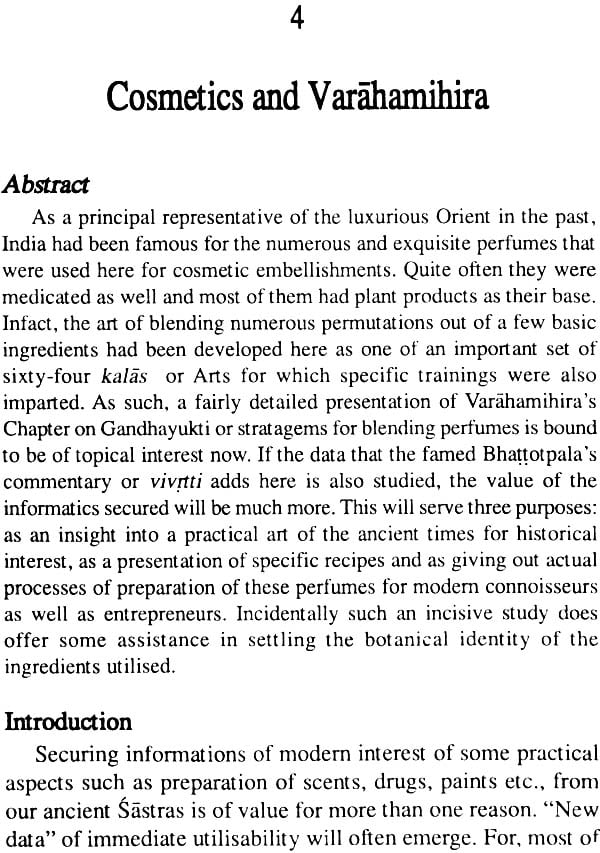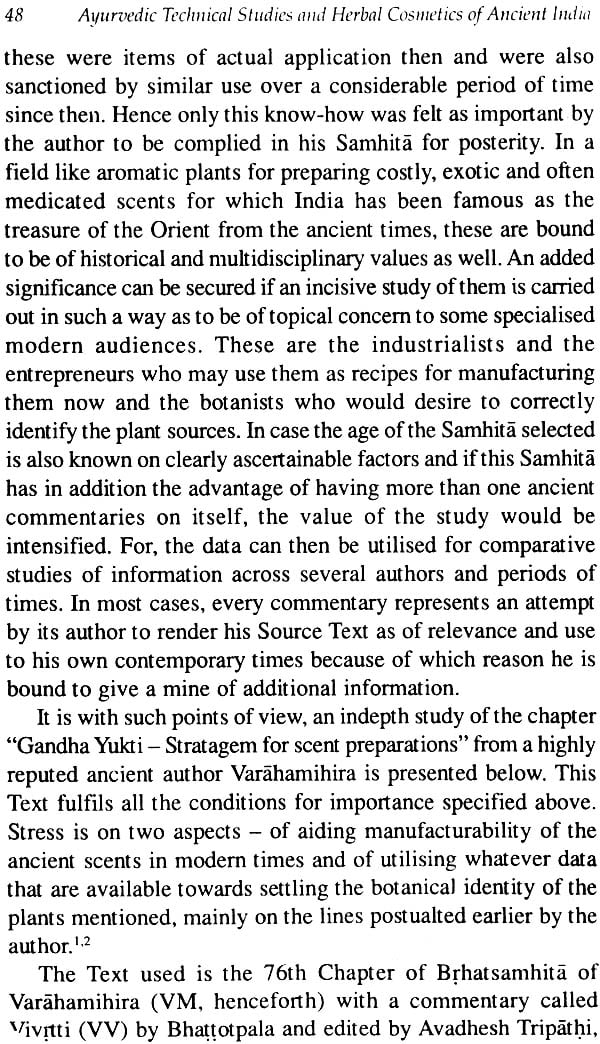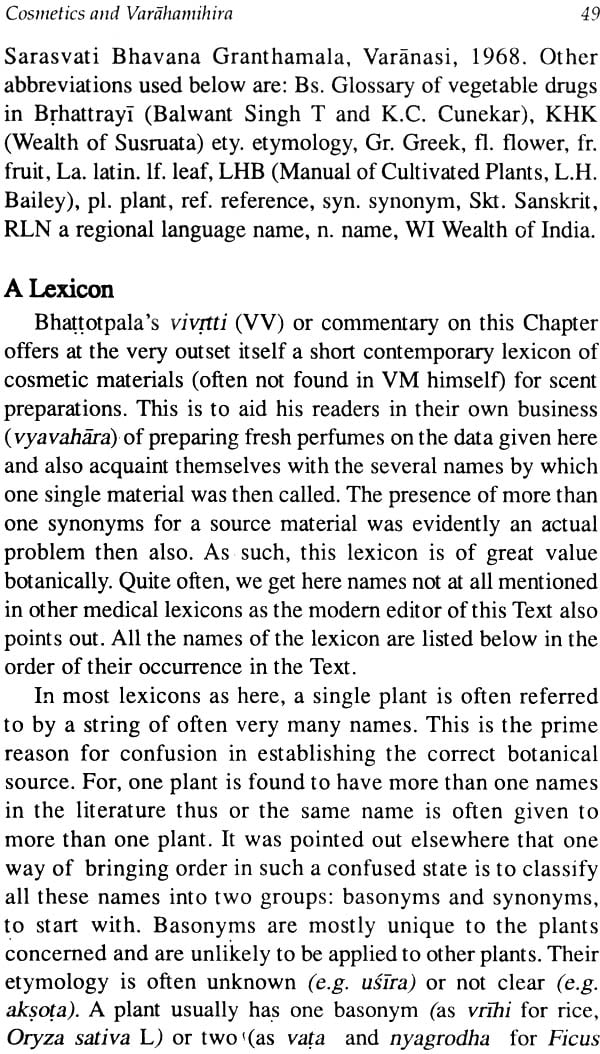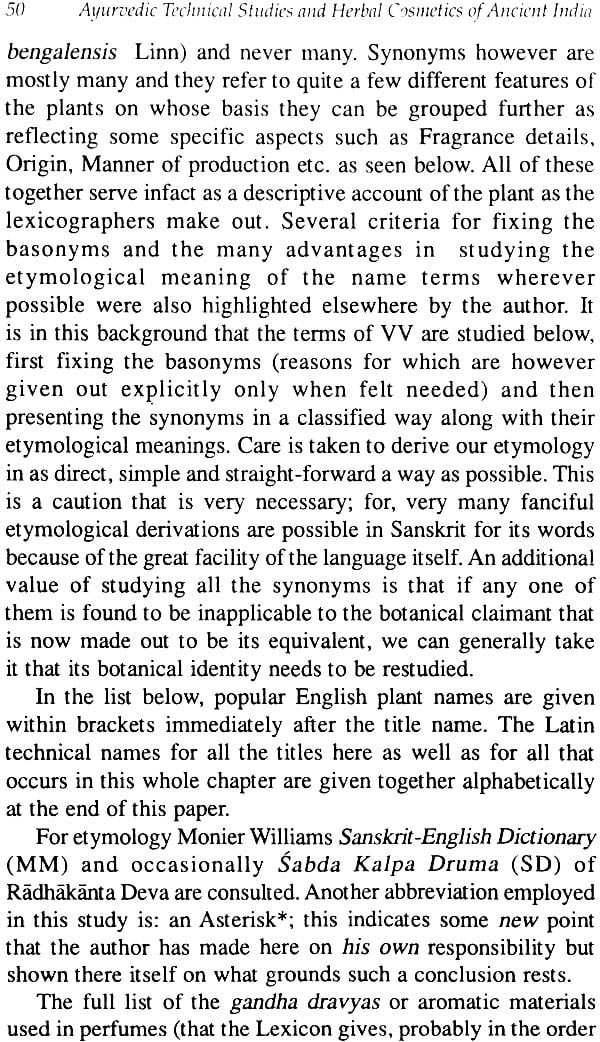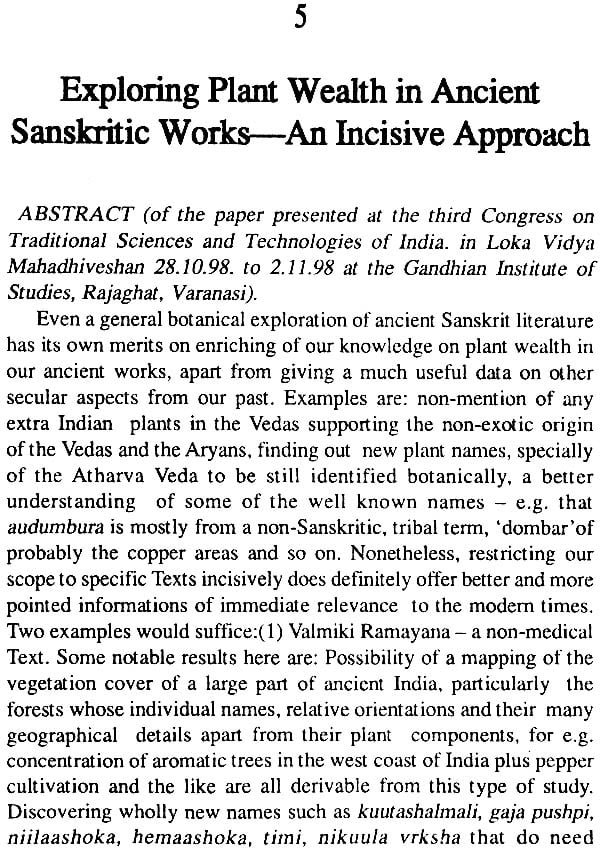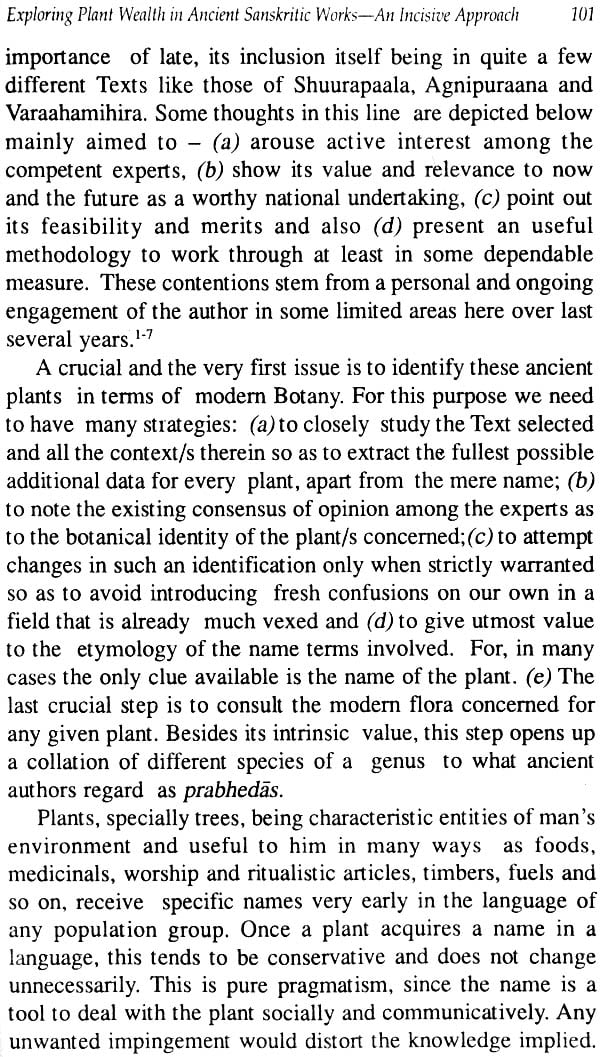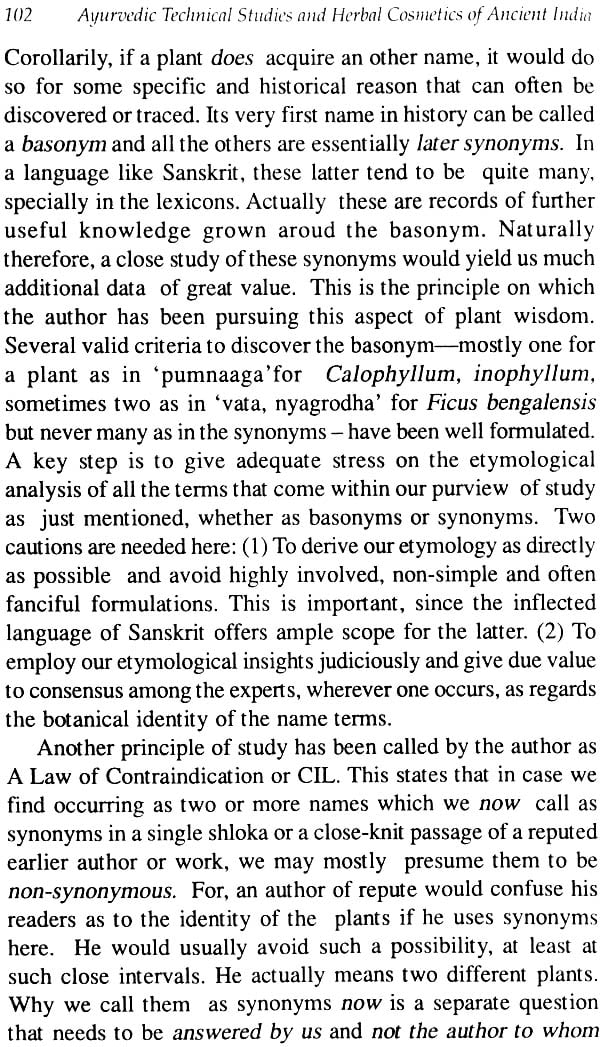
Ayurvedic Technical Studies and Herbal Cosmetics of Ancient India
Book Specification
| Item Code: | NAL280 |
| Author: | K.H Krishnamurthy |
| Publisher: | B.R. Publishing Corporation |
| Language: | English |
| Edition: | 2001 |
| ISBN: | 9788176461771 |
| Pages: | 132 |
| Cover: | Hardcover |
| Other Details | 8.5 inch X 5.5 inch |
| Weight | 300 gm |
Book Description
Exploring ancient Sanskrit Texts for their scientific aspects adopting modern methods of rigorous investigative approaches can be said to have begun only recently. Two ancient sciences of India that can be said to be alive still in the old formats are Ayurveda and, Gandharvaveda. We do have extensive ancient literature on these two as well as practical applications.
In this book Ayurvedic Technical Studies and Herbal Cosmetics of Ancient India, five studies are presented. The first one deals with ecological resource management that the great Canakya mentions in considerable detail in his famous Artha Shastra. This is followed by a very technical study in Chapter 4 of an equally topical value that is concerned with cosmetics and perfume preparations as another famous person of Indian History, Varahamira deals with in his Brhatsamhita. The other three studies are concerned with an attempt of devising a rather new methodology of pharmaco-linguistics to solve the vexed problem of settling the botanical identity of ancient plant names of ayurvedic texts on some rational basis. The last chapter presents the text of a paper on Exploring Plant Wealth in Sanskritic Works-A paper presented by the Author at the National Conference on Ethno-pharmacology held in Mysore.
After a long and distinguished career, Dr. K.H. Krishnamurthy, retired as Head, Department of Biology and Convenor, Faculty of History of Medicine, JIPMER, Pondicherry. He actively worked on Ayurvedic Botany and Pharmacoanosy, Medical Linguistics and Advanced Aspects of Science in regional Indian languages. Currently he is working as Director of Research, AKSHARAM (A prominent Wing of Samskrita Bharati), Bangalore.
His research papers have appeared in National and International Journals which number over a hundred. His books include: Brain, Mind and Speech; Perspective for Modem Scientific Research; Physiology of Vision; A New Approach to the Science of Language; Wealth of Sushruta; and Sanskrit and Science; A Source Book of Indian Medicine-An Anthology; Outlines of Ayurveda; Ayurveda.
He has received many honours and awards. Under a project sanctioned by the Ministry of Human Resource Development of the Government of India, he is currently working on publications entitled Vaignanika Pada Kosha, Dictionary of Technical Terminology of Modern Sciences in Sanskrita as Applicable to the Whole of India.
Exploring ancient Sanskrit Texts for their scientific aspects adopting modern methods of rigorous investigative approaches can be said to have begun only recently. It is not that there was no science at all in our ancient texts concerned; for, ultimately science is any body of knowledge built on rational, observational and where possible and if warranted, on experimental grounds. It should be repeatable and verifiable and also related to some aspect of human interest. No science will ever arise in a pure vacuum and its very birth is always related to a felt need of the society and its intelligentsia. Two ancient sciences of India that can be said to be alive still in the old formats on such a definition are Ayurveda and Gandharva veda or Musicology. We do have extensive ancient literature on these two as well as practical applications. Nonetheless, we can find ample materials that cannot merely be conceded as falling within such a broad definition of science as taken here but also happen to be of great topical significance and greater potentiality in the future. The studies selected here come under the latter category.
Of the five studies presented here, the first one deals with ecological resource management that the great Canakya mentions in considerable details in his famous Artha Shastra. This is followed by a very technical study in chapter four of an equally topical value that is concerned with Cosmetics and Perfume Preparations as another famous person of Indian History, Varahamihira deals with, in his Brihatsamhita. The other three studies are concerned with an attempt by the author of devising a rather new methodology of Pharmacolinguistics to solve the vexed problem of settling the botanical identity of ancient plant names of ayurvedic texts on some rational basis.
The first three studies were wholly sponsored by The Foundation for Revitalization of Local Health Traditions (FRLHT), Bangalore. The last one is the text of a paper presented under invitation at The Second National Conference on Ethnopharmacology held in Mysore in 1977.
| Acknowledgements | v | |
| Preface | vii | |
| 1. | Ecological Resource Management in Canakya | |
| 2. | Methodology for Ethnobotanical Correlation Study | 25 |
| 3. | Indian Ethnobiological and Folkloristic Studies - Plants | 37 |
| 4. | Cosmetics and Varahamihira | 47 |
| 5. | Exploring Plant Wealth in Ancient Sanskritic Works - An Incisive Approach | 99 |
| Index | 117 |
